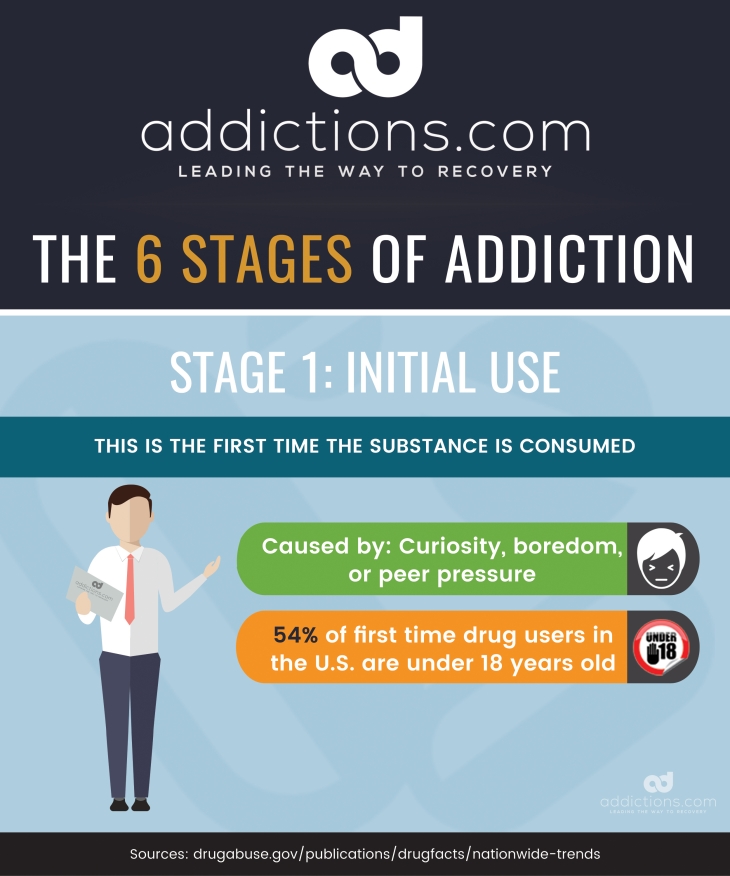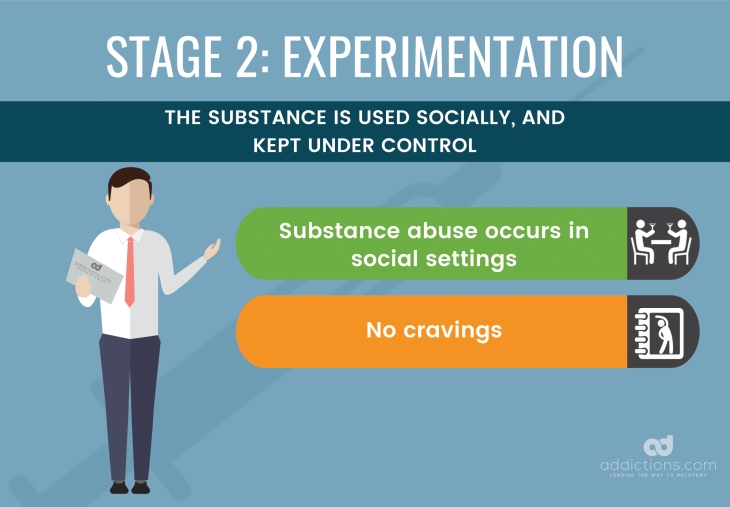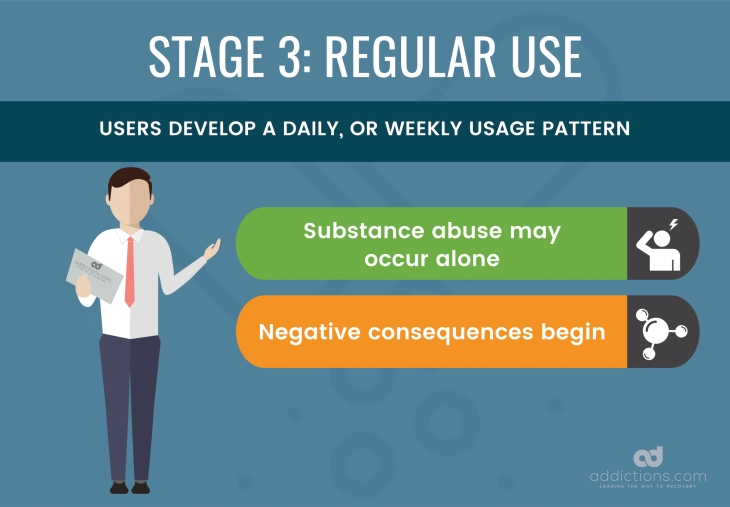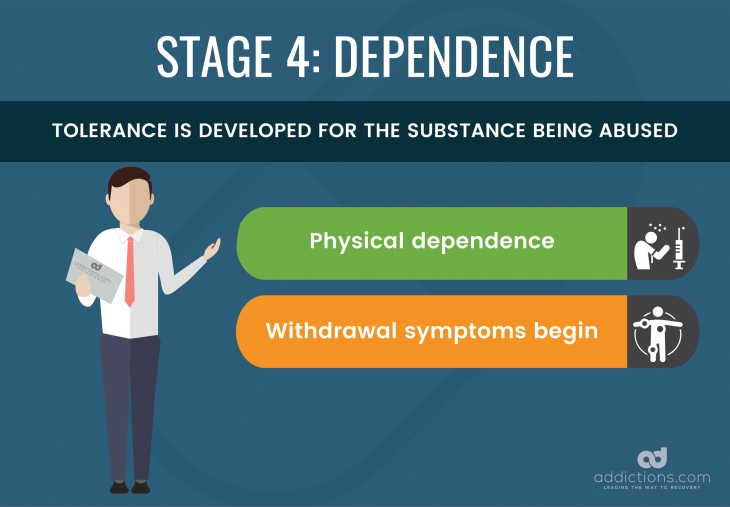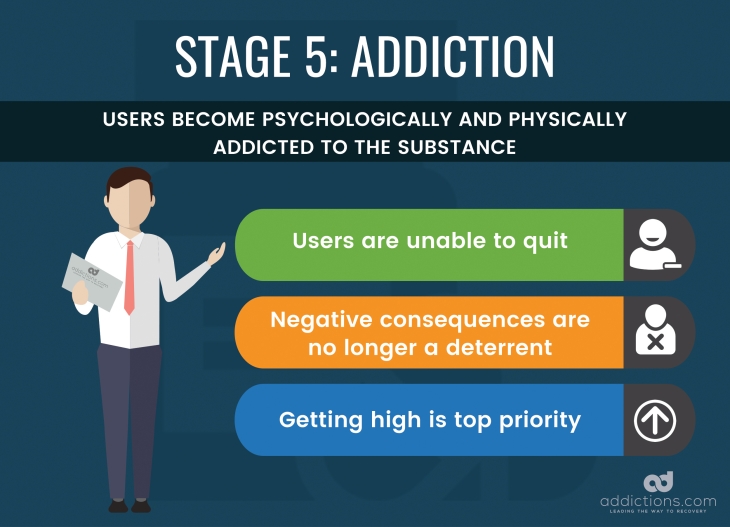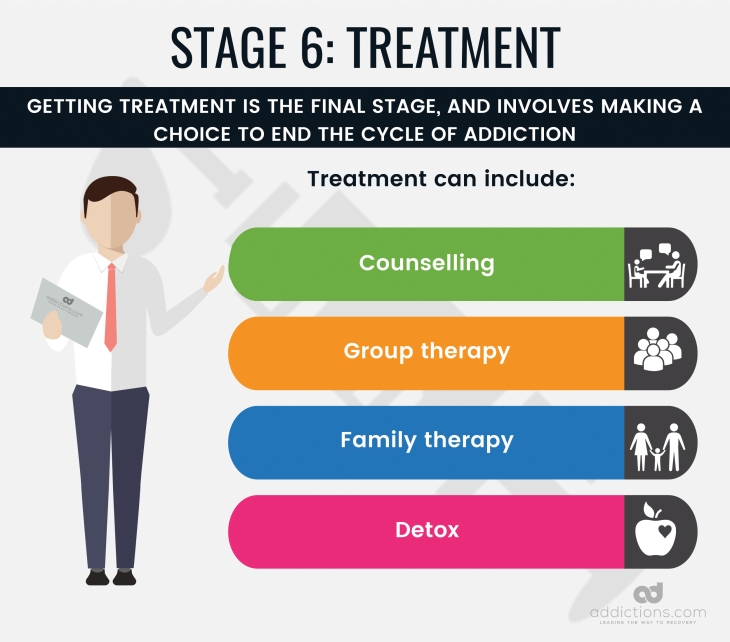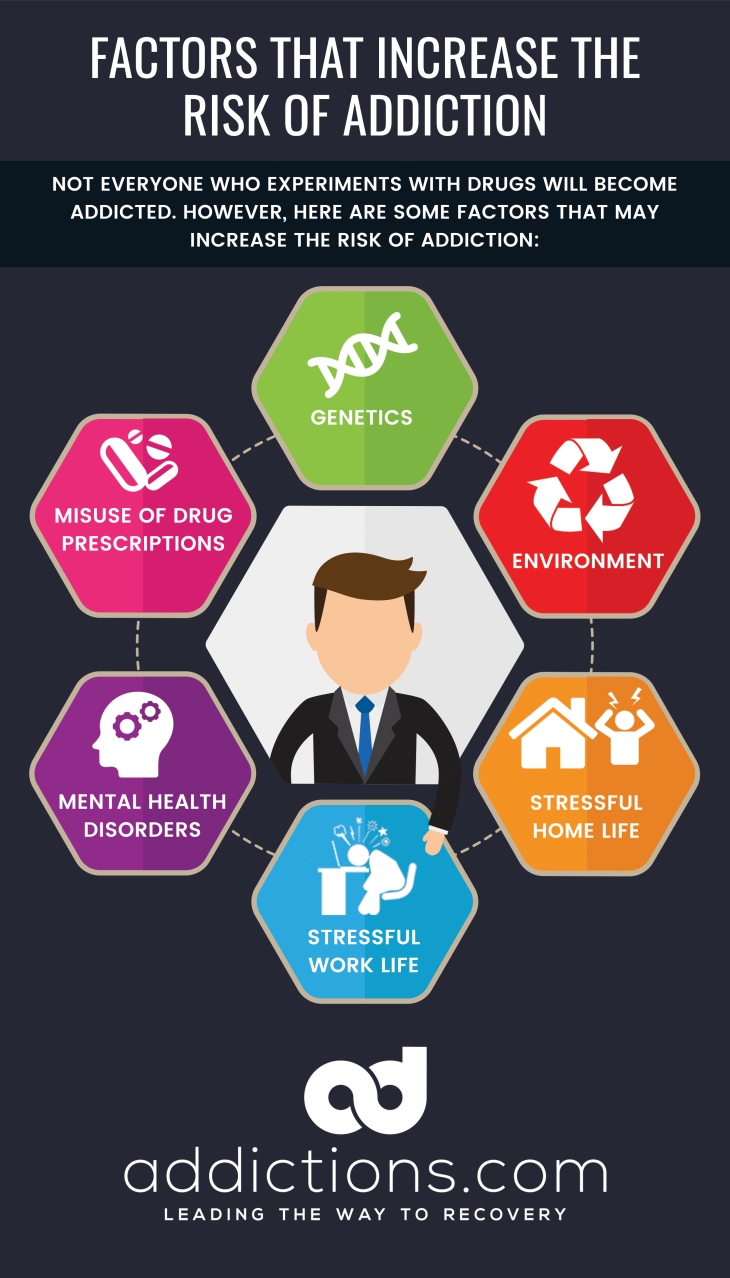The onset of addiction is a gradual process that can take weeks, months, or years. Addiction works differently for each individual person, but generally begins with experimentation, followed by regular use of drugs or alcohol, and physical dependence on those substances. Many times, dependence leads to psychological addiction, followed by one or more relapses that increase the risk for overdose, coma, and death.
Breaking the cycle of addiction may be tough, but can be accomplished by nearly anyone who seeks help in the form of addiction treatment. Therapies such as detoxification, counseling, and continuing care offer countless benefits in the fight against addiction, and can improve your health, help you repair relationships with family and friends, and teach you the skills needed to stay sober for life following treatment.
Understanding how addiction develops in the first place can prevent you and your loved ones from ever having to deal with addiction firsthand. Addiction can lead to serious problems with finances and the law, and offers many other negative consequences that can strongly impact your future livelihood.
Here’s a closer look at the six main stages of addiction, and how you can break the cycle of addiction to improve your life, or that of your loved one.
The 6 Main Stages of Addiction
If you or someone close to you uses drugs or alcohol, knowing the signs for each stage of addiction can help you determine whether help is needed. Addiction treatment centers can safely and effectively treat ANY stage of addiction, regardless of where you or your loved one stand in terms of this chronic relapsing brain disease.
1. Initial Use
Most Americans try drugs and alcohol for the very first time during their teen years. It’s normal for teenagers to be curious about drugs and alcohol, and to be open to experimenting these substances as they transition into adulthood. However, this factor is also why it’s important to educate teens early on about the dangers associated with alcohol and drug use.
In 2013, over 54 percent of Americans who tried illicit drugs for the first time were under the age of 18. More than half of all individuals who try illicit drugs for the first time start with marijuana, though prescription painkillers and inhalants are other common substances.
Marijuana is becoming increasingly easier to obtain in the U.S. due to its legalization, while prescription painkillers can be found in hundreds of thousands of medicine cabinets across the country. Inhalants like hairspray and deodorant can be found in nearly any household in America.
When first-time users have satisfied their curiosity about drugs and alcohol, they may either decide to stop using, or move forward with trying other substances.
2. Experimentation
Experimentation is when individuals use drugs and alcohol in certain instances, such as at parties or special events, or as a way to wind down after school or work. During the experimentation stage, users often have full control over their alcohol and drug use, and do not suffer physical or psychological cravings. Binge drinking is included as part of the experimentation stage, since those who engage in binge drinking are not considered alcohol dependent.
3. Regular Use
This stage of addiction is roughly defined as using drugs or alcohol consistently in a predictable pattern, or under the same set of circumstances every time. For instance, regular use is when you start consuming a six-pack of beer every night, or make plans to smoke marijuana every weekend.
Those who start using drugs and alcohol regularly may do so on their own without friends and family, and may suffer occasional negative consequences associated with use, such as missing work or school. When regular drug use begins threatening your health, safety, and overall livelihood, it’s possible you may be on your way to becoming addicted.
4. Dependence
Drug and alcohol abuse can lead to physical dependence as the body becomes reliant on those substances to perform certain functions. For instance, most drugs interfere with the brain’s dopamine levels, which can make it difficult for users to naturally experience feelings of reward and satisfaction on their own without using drugs.
Dependence begins with tolerance, which is when users need higher amounts of drugs and alcohol to achieve the same level of euphoria. Individuals who become tolerant and increase their drug dosage or alcohol intake are at risk for becoming physically dependent on those substances. Physical dependence is often characterized by a set of withdrawal symptoms users will experience when they suddenly stop using drugs and alcohol, such as nausea, vomiting, and sweating.
5. Addiction
Addiction is defined as a chronic relapsing brain disease, which means addiction is psychological as well as physical. Addiction causes changes in your body, mind, and behavior that influence you to keep abusing drugs despite negative consequences. Many times, addiction can take over one’s life, and take precedence over important life responsibilities such as work, family, and education.
Common signs of addiction include:
- Devoting more time to obtaining and using drugs, and recovering from drug use
- Loss of interest in favorite hobbies and activities
- Being unable to cope with life without using drugs and alcohol
- Avoiding friends and family
- Hiding alcohol and drug use from others
- Continued use despite negative consequences
- Being unable to stop using despite trying to quit
If you or your loved one is exhibiting any of the above signs of addiction, it may be time to get help in the form of addiction treatment.
6. Treatment
Addiction treatment is the last stage of addiction, but only for those who decide to get help. Treatments including detox, counseling, and relapse prevention education are effective at treating addiction as a whole both physically and psychologically so patients can stay clean for life. Addiction treatment can last anywhere from several days to several months, depending on how long a patient needs to fully recover from addiction.
Factors That Increase the Risk for Addiction
Though experimentation is the second stage in the cycle of addiction, not everyone who experiments with drugs and alcohol is at high risk for suffering physical dependence and addiction. Some individuals are more susceptible to addiction than others based on factors that range from family upbringing and genetics, to escaping symptoms of mental health disorders like depression.
Here are common factors that increases one’s risk for addiction:
- Genetics. Having a family history of substance abuse increases the risk for addiction.
- Environment. Those who frequently spend time in environments with regular access to drugs and alcohol are more likely to suffer addiction.
- Problems at home. Those who suffer domestic violence and other stressful situations at home may use drugs and alcohol to cope.
- Problems at work or school. Those who have negative feelings associated with work or school, or who stress about failures at work or school may use drugs and alcohol to escape these feelings.
- Mental health disorders. Those who suffer from mental health conditions such as bipolar disorder, OCD, and PTSD may use drugs and alcohol to self-medicate and mask their symptoms.
- Peer pressure. Youth and adults alike can suffer peer pressure at any age, and start using drugs and alcohol as a way to fit in and be accepted by others.
- Misusing addictive prescription drugs. Many times, addiction is unintentionally caused by misusing medications that carry a high risk for dependence and addiction, such as opioids, benzodiazepines, and sleep aids.
How to Break the Cycle of Addiction
Trying to break the cycle of addiction by yourself can be challenging, and may even seem impossible to those who have tried quitting on their own in the past without success. Quitting drugs and alcohol on your own cold turkey can be risky and life-threatening, and lead to seizures, psychosis, and other serious health problems. The most effective way to break the cycle of addiction is to seek help from addiction treatment centers willing to customize treatments for you based on your unique history with addiction.
Addiction can be treated using multiple therapies and methods, as long as they collectively approach the disease both physically and psychologically. Addiction is most commonly treated using three methods: detox, counseling, and continuing care.
Here’s what you need to know about the stages of recovery from addiction.
1. Detox
Detox is the first stage of treatment, and helps patients overcome dependence on drugs and alcohol. Withdrawing from drugs and alcohol can trigger a long list of symptoms that range from mild to severe — many of which cause discomfort and can lead to health complications like dehydration and malnutrition.
Fortunately, detox treatments help reduce or eliminate withdrawal symptoms so you can experience a more comfortable, pain-free recovery. Some treatments even use prescription drugs that mirror the effects of the drugs to which you’re addicted so you can gradually withdraw over a long period of time and benefit from a reduced risk for relapse.
2. Counseling
Counseling is the second stage of treatment after detox. Experienced addiction counselors and therapists may use one or more psychological therapies that teach you how to manage and overcome addiction from an emotional and behavioral standpoint. You’ll identify triggers that typically lead to alcohol and drug use so you can learn the skills needed to avoid those triggers in the future following treatment.
Cognitive-behavioral therapy, community reinforcement, and group and family therapies are commonly used to treat addiction psychologically. Behavioral therapies are also used to treat those who suffer mental health disorders that may have triggered addiction, such as depression, anxiety, and PTSD. Mental health disorders that coincide with addiction are called co-occurring disorders, and can be treated at nearly any drug rehab center.
3. Continuing Care
Continuing care, also known as aftercare, helps patients stay sober in the months and years after completing addiction treatment. Continuing care often consists of individual, group, and family therapy, 12-step support groups, art therapy, and other therapies useful at preventing relapse. Patients also receive ongoing relapse prevention education so they can continue to stay clean, and master the skill of navigating society without being tempted to use drugs and alcohol.
How to Prevent Relapse
Relapsing from drug abuse at least once after getting clean is considered normal, and is not to be viewed as a failure for those struggling to overcome addiction. Sometimes it can take years for an individual to fight psychological components of addiction, which is why participating in continuing care is vital for those still in recovery.
Research shows that up to 60 percent of addiction patients relapse at least one time following treatment. One study published in Irish Medical Journal found that 91 percent of patients who went through heroin detox suffered relapse; however, these patients did not receive counseling or continuing care. Fortunately, relapse can often be prevented by attending ongoing addiction therapy in the form of continuing care.
The best way to prevent a relapse is to familiarize yourself with warning signs that indicate a relapse is around the corner. Here are common signs you or a loved one may relapse:
- Spending more time alone without friends and family
- Poor nutrition
- Poor sleeping habits
- Poor personal hygiene
- Skipping addiction treatment or support groups
- Staying quiet and not sharing during support group meetings
- Denial about addiction, alcohol and drug use
- Cravings for drugs and alcohol
- Romanticizing drug and alcohol use
- Thinking about places and people related to past drug use
- Lying and secretive behavior
- Looking for opportunities to be near drugs and alcohol
- Using drugs or alcohol “just once”
The most common trigger for relapse is exposure to drugs, such as spending time with people who use drugs and alcohol, and spending time in places where alcohol and drugs are easily accessible.
Experiencing a relapse can make you feel depressed, guilty, and sad, and can evoke other negative emotions that may worsen your struggle with addiction. If you have relapsed, reach out to a trusted, caring friend or family member for help, or contact an addiction treatment center immediately. Twelve-step support groups like Alcoholics Anonymous and Narcotics Anonymous are also highly effective at keeping you distracted from drug and alcohol use, and can guide you through overcoming relapse so you can once again achieve sobriety.

